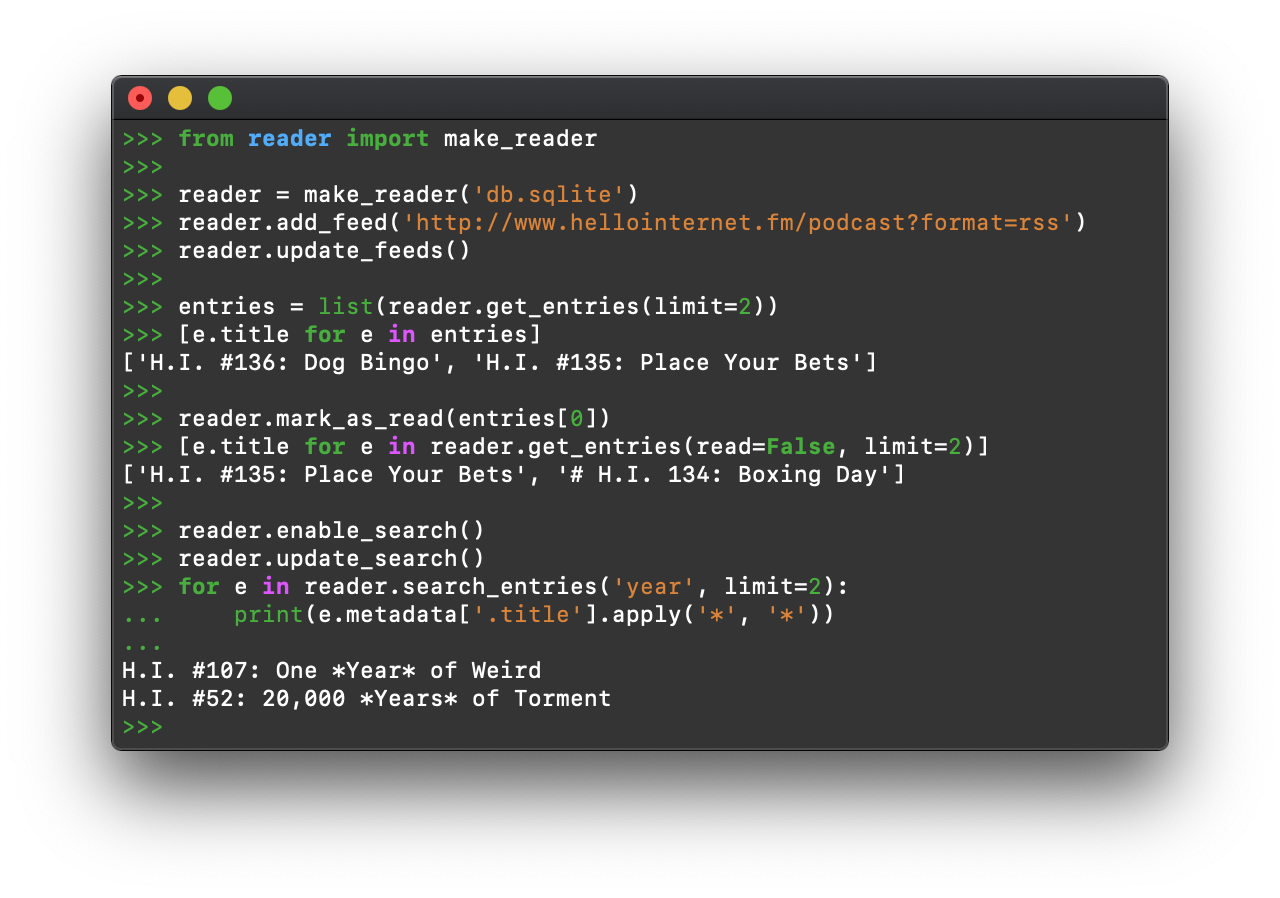https://assets.amuniversal.com/86e742401343013a7fd8005056a9545d
Thank you for voting.
Hmm. Something went wrong. We will take a look as soon as we can.
Dilbert Daily Strip
Just another WordPress site
https://assets.amuniversal.com/86e742401343013a7fd8005056a9545d
Thank you for voting.
Hmm. Something went wrong. We will take a look as soon as we can.
Dilbert Daily Strip
https://laravelnews.imgix.net/images/larastan.png?ixlib=php-3.3.1
After initially writing about Larastan back in 2018, we are pleased to see the release of Larastan v1.0 this week, a package to help analyze Laravel application code:
Larastan is a development dependency that adds static analysis to Laravel, improving developer productivity and code quality. At the core, it’s a PHPStan wrapper for Laravel and helps you find errors in your code through static analysis. It helps catch bugs before you even write tests for the code:
You can use Larastan to analyze application code as well as use it to analyze your Laravel packages.
Getting started in your new or existing Laravel project is as easy as installing the package and configuring PHPStan:
1composer require nunomaduro/larastan --with-dependencies --dev
2
3# after setting up a `phpstan.neon` file in the root
4# of your project, you can analyze your code:
5./vendor/bin/phpstan analyse
If you find this package useful, consider sponsoring the developers Nuno Maduro and Can Vural on GitHub. The Larastan project page has links to all the ways you can sponsor their work.
You can learn more about this package, get full installation instructions, and view the source code on GitHub. I’d recommend checking out the rules specific to Laravel applications, with configurable options.
You can see the complete list of new features and updates below and the diff between v0.7.15 and v1.0.0. Also, the following release notes are directly from the changelog:
Enumerable::filter in #981
rescue parameter of rescue function now accepts the Throwable by @sebdesign in #989
CheckJobDispatchArgumentTypesCompatibleWithClassConstructorRule rule in #991
non-empty-string types in stubs. c5b81cf
Laravel News
https://gunfreezone.net/wp-content/uploads/2021/11/FDHKc66UYAErVDI.jpeg
The upside of social media is that the professional media no longer has a monopoly on information.
The media is trying to do its best to George Zimmerman Kyle Rittenhouse.
Social media has done its homework.
This is the skateboarder who Kyle canoed.
None of that expressly justified shooting him, but it makes it harder to believe that Huber was the good guy trying to help people.
This information also has a way of swinging jury opinions.
Good.
I shed no tears over a wife beater who got split in half by a 223.
https://gunfreezone.net/wp-content/uploads/2021/10/tumblr_nz9rdunO6L1rl43cyo1_1280.png
Dune is a great book.
Like Starship Troopers (another favorite) and Atlas Shrugged, the plot is really just a way of making a philosophical and political treatise into something enjoyable to read.
And it’s great.
I highly recommend reading or twice. The first time abridged to get the plot, then again unabridged to focus on the philosophy and not worry about plot points.
But, if you really want the most distilled understanding of Dune, the best is a Tumblr page called Calvin & Muad’Dib.
It’s just Calvin & Hobbes strips with the original text replaced with Dune quotes.
It’s epic.
How very true and how much we see this today.
How valuable the philosophy and how clearly it’s shown in a simple comic strip.
I love it.
https://death.andgravity.com/_file/reader-2-0/reader.png
Hi there!
I’m happy to announce version 2.5 of reader, a Python feed reader library.
Here are the most important changes since reader 2.0.
Full-text search is now enabled by default
â there are no additional dependencies to install,
and no required action before using it.
To allow users to understand how they consume content,
it is now possible to get some statistics on feed and user activity.
First, you can count the number of entries per day
during the last 1, 3, 12 months.
This is useful to get an idea of how often a feed / tag / query
gets new entries, and how it changes over time.
Second, the time when an entry was last marked as read/important is recorded.
This allows seeing if, how often, and how soon you engage with new entries
â I’m still working on how to translate this into a useful summary.
Also, it allows seeing if an entry was explicitly marked as unimportant.
The entry_dedupe plugin got significantly better:
Users can now add entries to existing feeds.
This is useful when you want to keep track of an article
that "fell off the end" of a feed that only has the last X articles.
You can now get the subtitle and version of a feed.
Also, it is possible to know when an entry was added to reader,
and by whom (the feed or the user).
It is now possible to run arbitrary actions after a feed is updated.
reader now supports Python 3.10 and PyPy 3.8.
See the changelog for details.
reader takes care
of the core functionality required by a feed reader,
so you can focus on what makes yours different.

reader allows you to:
…all these with:
To find out more, check out the GitHub repo and the docs,
or give the tutorial a try.
Have you been unhappy with existing feed readers and wanted to make your own, but:
Are you already working with feedparser, but:
… while still supporting all the feed types feedparser does?
If you answered yes to any of the above, reader can help.
So you can:
Obviously, this may not be your cup of tea, but if it is, reader can help.
Planet Python
https://assets.amuniversal.com/41f6c6800e80013a7e87005056a9545d
Thank you for voting.
Hmm. Something went wrong. We will take a look as soon as we can.
Dilbert Daily Strip
https://theawesomer.com/photos/2021/10/phantom_of_the_raptor_t.jpg
Filmmaker Dustin Farrell captured this awe-inspiring footage of an F-22 Raptor aircraft as it was piloted through the skies by Maj. Joshua “Cabo” Gunderson. The 1000 FPS Phantom Flex4K slow-motion video shows every minute detail of the wake turbulence left behind by the fighter and its powerful jets.
The Awesomer
http://img.youtube.com/vi/BwPL0Md_QFQ/0.jpg
With four movies under its belt, the Toy Story franchise remains the undeniable crown jewel in Pixar’s portfolio. But after Toy Story 4 put something of a boy on Woody’s story, the focus is now shifting to Buzz Lightyear. The first trailer for Lightyear just arrived, and it sure paints a different picture than what we’re used to in the Toy Story universe. For one, the titular character isn’t a toy, but a real flesh-and-blood human who appears to be the inspiration for the Buzz Lightyear figure we know so well.
The trailer definitely gives off origin story vibes, as it looks like Buzz makes the journey from pilot to intergalactic explorer in his signature spacesuit. How he gets from there to a beloved toy in the Toy Story world remains to be seen — but since this is Pixar, we’re expecting the two stories to collide in a way that’s fairly unexpected.
Lightyear is set to hit theaters on June 17th, 2022, with Chris Evans voicing Buzz for the first time. Unfortunately for those of us who have gotten used to watching new Pixar films on Disney+, it seems like you’ll have to head out into the world if you want to see this during that summer release window.
Engadget
https://www.louderwithcrowder.com/media-library/image.png?id=27810082&width=980
This afternoon, Attorney General Merrick Garland testified before a congressional hearing, and he wasn’t prepared for the kind of metaphorical beating he was going to receive. Senator Ted Cruz gave one helluva performance, skull dragging Garland for every single person in the chamber to see. It made for very compelling television. It was magnificent.
In my head I see Willem Dafoe firing his pistol in the air, "It was a firefight!"
Cruz definitely came in guns-a-blazing, immediately laying into the frail old man with a heavy punch to the gut.
"You came before this committee in your confirmation hearing, you promised things would be different. I asked you specifically, quote, ‘Will you commit to this committee that under your leadership the department of justice will not target the political opponents of this administration.’ Here was your answer, quote, ‘Absolutely. It’s totally inappropriate for the department to target any individual because of their politics or position in a campaign.’ That was your promise just a few months ago. I’m sorry to say you have broken that promise."
Ted Cruz absolutely LAYS into AG Garland, and it is amazing
youtu.be
And before Garland could even begin to process anything, Cruz eviscerated him. He demonstrated just how the AG did, in fact, weaponize the DOJ against parents in an act of political persecution. Garland played stupid—which is never difficult for a leftist hack—as Cruz drilled into him about the FBI being sicked on parents, who the National School Board Association recently described as "domestic terrorists", an event linked directly to the recent rape of a young girl in a Loudoun County school.
Cruz proceeded to grind the white-haired radical into the floor as Garland refuses to answer questions relating to the conflict of interest regarding the DOJ protecting the teaching of CRT and his son-in-law profiting from it.
I cannot describe the throttling properly without thousands of words. Needless to say, you must watch the video to appreciate it, and I promise you will not be disappointed.
Parents are fighting back against CRT. Workers are fighting back against vaccine mandates. And we have a handful of leaders in government who are fighting back against the radicalism in the Biden administration. My fellow Americans, #FightLikeHell.
Get your content free from Big Tech’s filter. Bookmark this website and sign up for our newsletter!
THIS Is Why We #FightLikeHell: LwC Mission Statement | Louder with Crowder
youtu.be
Louder With Crowder
https://www.louderwithcrowder.com/media-library/image.png?id=27809584&width=980
Sometimes, you wanna go right to the videotape. Here is Senator Tom Cottom saying what we’re all thinking about Merrick Garland right to his douchey-looking face.
Sen. Cotton On AG Garland Responding To NSBA Letter By Targeting Parents: “Shameful"
youtu.be
"[Scott Smith] was cited by the school boards association as a domestic terrorist, which we now know, that letter and those reports were the basis [for your memorandum]. Your performance is shameful, thank God you are not on the Supreme Court."

Let’s fill in some context. Merrick Garland was being grilled over the White House’s attack on parents at school board meetings. The National School Board Association wrote to the White House to do something about the angry parents they referred to as "threats of violence." The poster child for these threats was Scott Smith, who was angrily removed from a Loudoun County school board meeting. Joe Biden’s White House, of course, was more than happy to side against the parents in favor of the school boards. Unlike the teachers’ unions, middle-class parents don’t give Joe Biden and the Democrats millions and millions of dollars.
THEN, we find out the reason Mr. Smith was angry was that his daughter was (allegedly) raped and the school tried to cover it up.
THEN, Garland testified to a House Committee that he never heard of the case.
THEN, the NSBA retracted their initial letter and apologized for the incendiary rhetoric. You know, calling parents "domestic terrorists" and whatnot. This is also where we find out the White House may have helped the NSBA write the incendiary rhetoric.
This all brings us to today. And Sen. Tom Cotton disemboweling Merrick Garland.
I’m glad we had this talk.
Get your content free from Big Tech’s filter. Bookmark this website and sign up for our newsletter!
THIS Is Why We #FightLikeHell: LwC Mission Statement | Louder with Crowder
youtu.be
Louder With Crowder